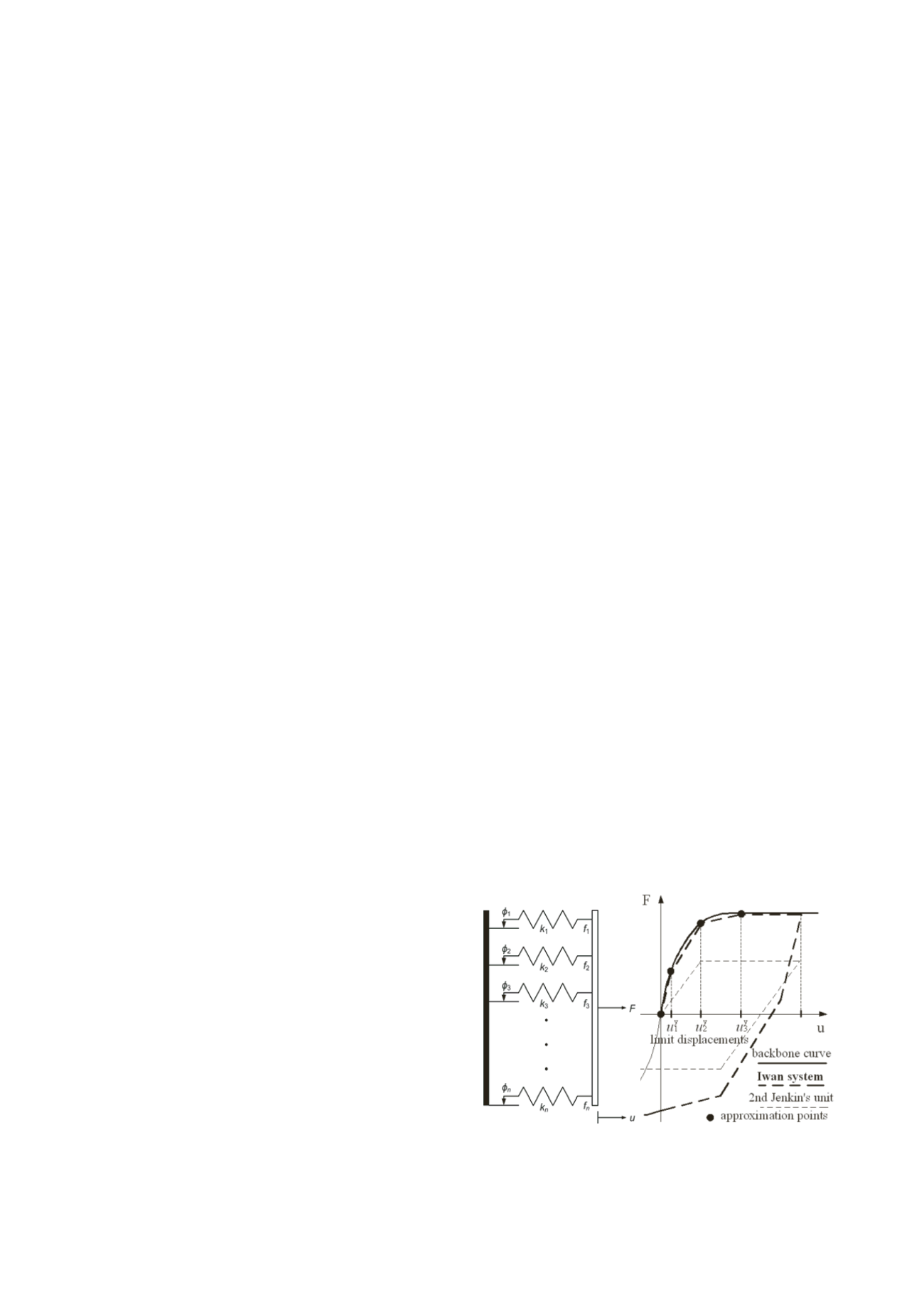
809
The application of the Iwan soil model on a deep excavation
L’application du modèle de sol d’Iwan sur une excavation profonde
Sokolić I., Szavits-Nossan A.
Faculty of Civil Engineering, University of Zagreb, CROATIA
ABSTRACT: Based on the Iwan model, numerical simulations of well documented construction of anchored diaphragm wall
supporting the 20 m deep excavation in Berlin sand were carried out. The model incorporates the critical state concept by using two
sets of elastic-plastic elements, one set for the volumetric response, and the other for shear. The parameters for the model were
derived from laboratory and in-situ tests on Berlin sand, and from data for some well tested sands (Erksak, Toyoura, Portaway,
Ticino, Ottawa). The results show that the model is capable of describing well the observed behavior of the diaphragm wall in all
construction stages. These results are compared with published results obtained by the advanced MIT-S1 model.
RÉSUMÉ : Fondées
sur le modèle d’Iwan, des simulations numériques de la construction bien documentée d'une paroi moulée
ancrée, soutenant l'excavation de 20 m de profondeur dans le sable de Berlin, ont été effectuées. Le modèle incorpore les concepts de
la
mécanique des sols de l’état critique
à l'aide de deux ensembles d’éléments élastoplastiques, un ensemble pour la réponse
volumétrique, et l'autre pour le cisaillement. Les paramètres du modèle ont été obtenus à partir des essais en laboratoire et in situ sur
le sable de Berlin, et en utilisant les données sur des sables bien testés (Erksak, Toyoura, Portaway, Tessin, Ottawa). Les résultats
montrent que ce modèle est bien capable de retracer le comportement observé de la paroi moulée dans toutes les étapes de la
construction. Ces résultats se comparent bien avec les résultats publiés obtenus en utilisant le modèle avancé MIT-S1
.
KEYWORDS: constitutive models, sand behavior, Iwan system, diaphragm wall, finite element analysis, critical state.
1
INTRODUCTION
The parallel system of simple elastic-plastic elements,
introduced by Iwan (1967) is very powerful tool for modeling
the behavior of solid materials within the framework of
continuum mechanics. The model is capable to trace almost any
given stress-strain curve under steady straining and to account
for unloading and reloading behavior without any extra rule. It
also accounts for Masing’s rules for cycling loading (Masing,
1926) even for irregular cycles. Based on results of triaxial
testing of sands, the model is developed into generalized 3D
effective stress soil model for sand. The model is calibrated and
verified on some well tested sands (Erksak, Toyoura, Portaway,
Ticino, Ottawa) showing the great capabilities to predict the
complex sand behavior in wide range of stress, strain and
densities and for different drainage conditions by using a simple
set of soil parameters (Sokolić, 2010).
In this paper the model is applied for simulating the
performance of the support system for 20-m-mdeep excavation
in Belin sand. The main goal was to validate the performance of
the Iwan sand model used in complex numerical simulation, and
to compare the results with published results obtained by using
the advanced soil model MIT-S1 (Nikolinakou, 2011). The
simple set of parameters for Berlin sand was derived by using
the available results of laboratory and in-situ soil investigations
together with interpretation of the results used in MIT-S1
numerical analysis.
2
IWAN SOIL MODEL
Iwan soil model consists of three characteristic units. The basic
unit is Iwan three-dimensional spring-slider system that defines
the development of elastic and plastic strains for any given 3D
increment of strain. It is made of two separate Iwan systems
(Figure 1) that distinguished shear from volumetric
compression, which is often assumed in soil modeling (Colins
et al. 2007). First Iwan system is used for modeling the shear
behavior of sand in drained triaxial test (CID), while the second
is used for the triaxial isotropic compression (ISO).
Second unit of the model is the set of material functions which
describes the characteristic behavior of sand observed in triaxial
testing. Material functions are used to define the shape of
backbone curves under steady shearing and compression for
different
‘state of sand
’ (state of stress, strain and density). The
backbone curves are used to calculate the strength and stiffness
of each spring-slider element of 3D Iwan’s system, by using the
pre-defined limit displacements of each element.
a)
b)
Figure 1. One-dimensional Iwan distributed element model; a) parallel
system of simple elastic-plastic elements; b) model response for primary
loading and unloading


